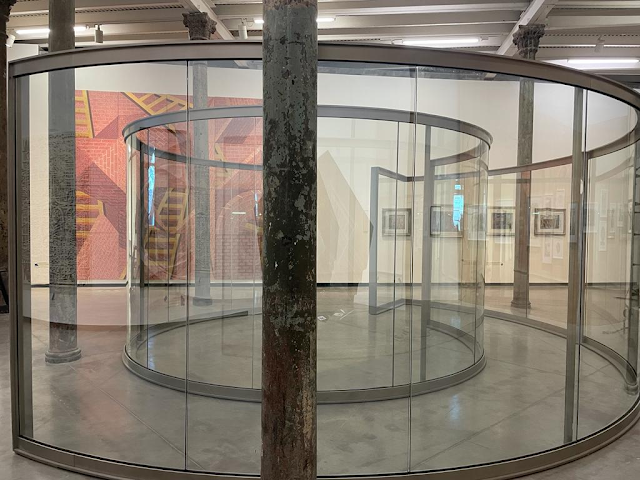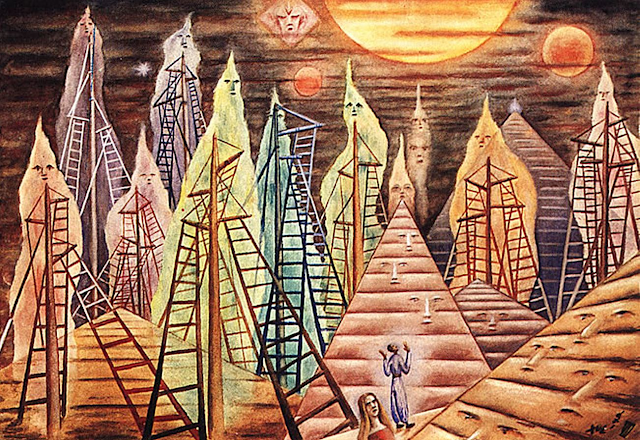"Labyrinths", an exhibition on their historical importance at Fundación Proa
October 25, 2022 | nadiaevangelinaFundación Proa, the space located in the heart of the city of La Boca, Buenos Aires, inaugurated the exhibition "Labyrinths" curated by Cecilia Jaime and Mayra Zolezzi. Throughout four thematic cores, the proposal goes through examples of history, literature, cinema, and plastic arts. "Labyrinths" seeks to reflect on the construction of labyrinths that, according to Jorge Luis Borges: "It is curious that man builds a space to get lost".
 |
| "Whirligig", installation by Dan Graham |
The second core, call the city as a labyrinth, exhibits engravings of the mythical Jericho present in manuscripts. Then we move through the prisons of Giovanni Battista Piranesi, arriving at works by contemporary artists with intricate cities, real or imaginary, such as the plans of Leon Ferrari, the pinwheel of Dan Graham, or the watercolors of Xul Solar.
 |
| Giovanni Battista Piranesi |
 |
| León Ferrari |
 |
| Xul Solar |
In literature, the labyrinth is the third thematic axis that presents texts by Jorge Luis Borges, Umberto Eco, Julio Cortázar, and Manuel Mujica Láinez. Labyrinths are sacred and pagan, they represent the path to perdition or salvation and can provoke. As Borges points out in an interview, labyrinths are fear but also hope; fear because we are lost, hope because there is a center, a plane, and architecture.
In the last room, the relationship between the labyrinths and the body is represented. This is glimpsed in Antonella Bussanich's video, which begins with the tracing of a labyrinth in the sand in allusion to that of the Chartres Cathedral until it transforms into a human brain through a juxtaposition and fusing of images. This idea is also found in the work of Yoan Capote, who starts from the design of the brain to approach it as a labyrinthine space, and Michelangelo Pistoletto, where the viewer becomes part of an installation, going through its labyrinth until finally finding the reflection of oneself, like Narcissus in the water.
 |
| Borges Labyrinths |
In this room we can find scientific illustrations dating from the eighteenth century of the labyrinth of the ear, which gives its name to the complex cavities of the inner ear, confirming the presence of a labyrinthine space constitutive of our organism.
Each of these proposals is accompanied by room texts and activities during the exhibition that aims to deepen the different meanings, uses, and adaptations of the labyrinth given by national and international artists of all times, highlighting the enigma it continues to rise.
"Labyrinths"
Location: PROA Foundation, Av. Don Pedro de Mendoza 1929, C1169 CABA, Buenos Aires (Argentina)
Opening Date: 3rd September 2022
End Date: 3rd November 2022
Working hours: Thursday-Sunday: 12pm to 19 pm
Official website: https://www.proa.org/esp/
Artists:
among others








0 Comments